Kleihauer–Betke Test
Laboratory test used to screen maternal blood samples for the presence of foetal red blood cells.
Laboratory test used to screen maternal blood samples for the presence of foetal red blood cells.
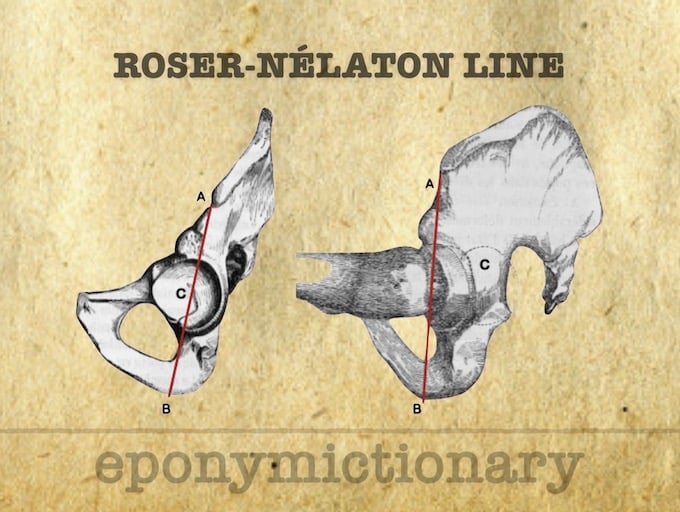
Roser-Nélaton line. The theoretical line drawn from the anterior superior spine of the ilium to tuberosity of the ischium, in the moderately flexed hip.

Robert Douglas Sweet (1917-2001) was an English dermatologist. Sweet’s Syndrome: Acute Febrile Neutrophilic Dermatosis.
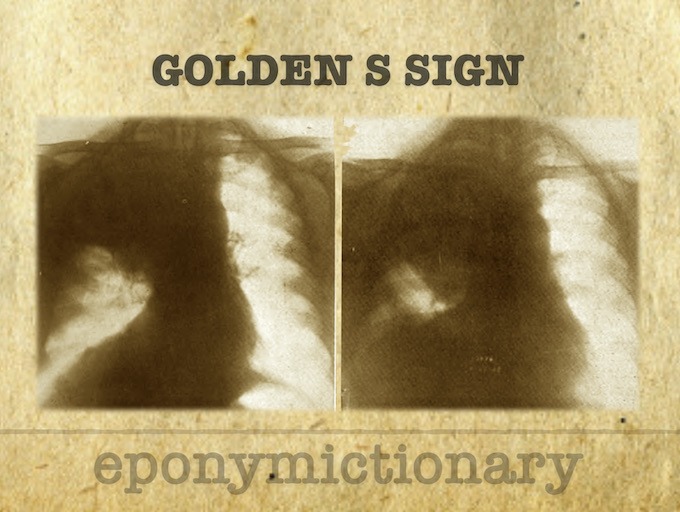
Golden S sign. Radiological sign which should raise suspicion of bronchial carcinoma. Rss Golden first described a characteristic reverse S-shaped shadow in the right upper lobe in 1925

Brown-Séquard syndrome is an incomplete spinal cord injury, affecting the entire lateral half of the spinal cord (hemisection) and results in weakness or paralysis on one side of the body and a loss of sensation on the opposite side

Ralph Weir Grover (1920-2008) was an American Dermatologist. Grover disease (1970) - transient acantholytic dermatosis

Eponym Zoon's balanitis, ie balanitis chronica circumscripta plasmacellularis. Johannes Jacobus Zoon (1902-1958) was a Dutch dermatologist.
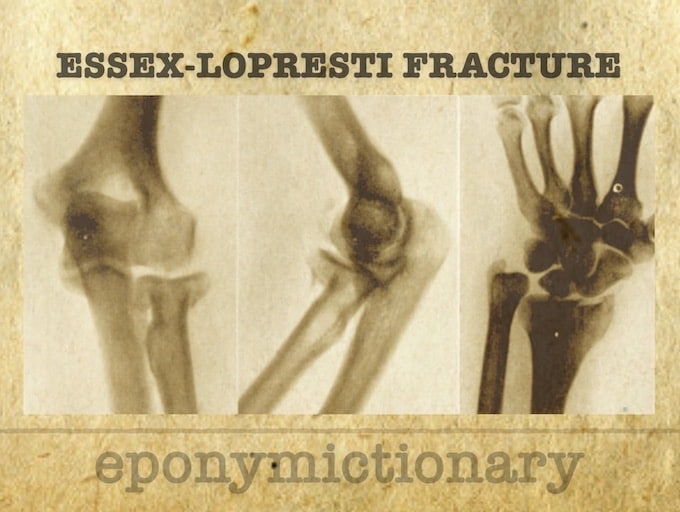
Essex-Lopresti injury consists of a radial head fracture AND dislocation of the distal radioulnar joint (DRUJ) AND disruption of the interosseous membrane (IOM)

Diffuse idiopathic skeletal hyperostosis (DISH), the now more generally accepted name for Forestier disease; is a poorly understood, systemic condition characterised by progressive calcification and ossification of ligaments and entheses

Emil Anthony Naclerio (1915-1985) was an Italian-American Thoracic Surgeon. Naclerio's V sign in oesophageal rupture
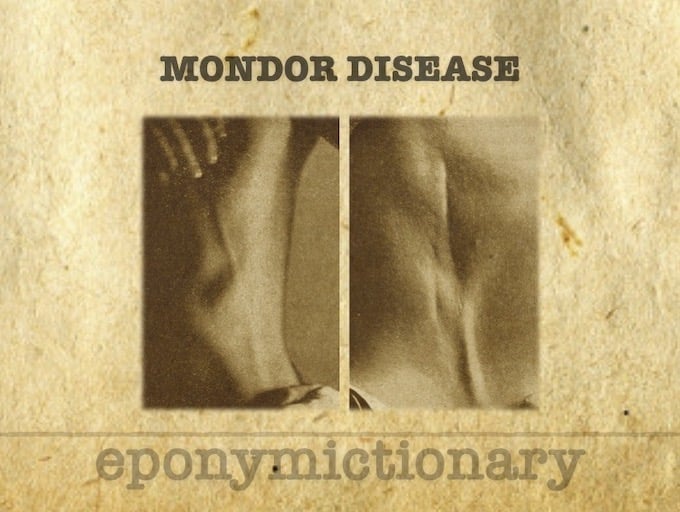
Mondor disease is a rare, benign condition characterized by thrombophlebitis of the subcutaneous veins of the breast and anterolateral chest wall.
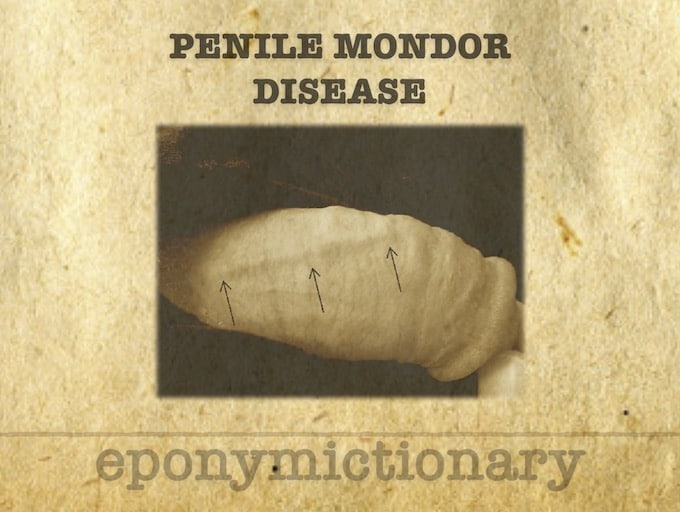
Penile Mondor’s disease (PMD) is an isolated superficial thrombophlebitis of the superficial dorsal vein of the penis.